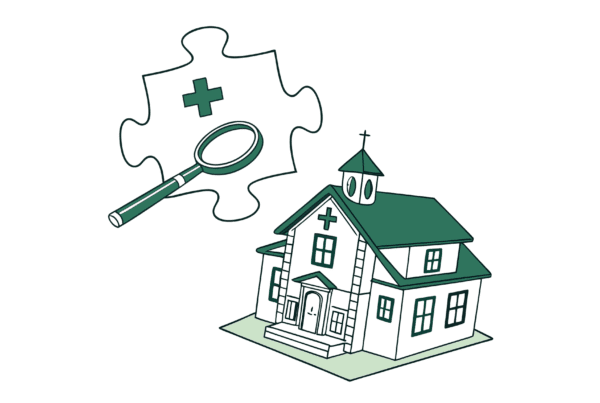The market for outpatient physical therapy practices in Florida is strong, presenting a significant opportunity for owners considering a sale. However, navigating this landscape requires more than just finding a buyer. Understanding current market dynamics, your practice’s true value, and the steps involved are all part of a successful transition. This guide offers insights to help you prepare for one of the most important financial decisions of your career.
Florida’s Thriving Physical Therapy Market
The U.S. physical therapy market is not just large. It is consistently growing. With a current valuation of nearly $50 billion, it’s projected to expand at a steady pace. This national trend creates a favorable environment for practice owners looking to sell. For you, this means more potential buyers and increased competition for quality practices.
The Florida Advantage
Florida’s market is particularly active. The state’s demographics and growth fuel a high demand for physical therapy services.
* The average Florida PT clinic sees around 32 patients a day.
* The price per session typically ranges from $100 to $120.
These metrics point to a healthy and profitable environment. They also attract sophisticated buyers who are actively looking for opportunities to invest in the Sunshine State.
What Buyers Look For in a Florida PT Practice
Beyond the strong market, a buyer’s interest depends on the health and structure of your individual practice. Preparing now, even if you plan to sell in a few years, is the best way to control your outcome. Here are a few things that sophisticated buyers analyze.
-
Your Financial Foundation. Your practice’s profitability is key. Buyers will look closely at your largest expense, which is typically payroll. It often accounts for nearly half of every dollar in sales. They will also look for clean, organized financial statements that clearly show the practice’s performance.
-
Provider Structure. Is the success of the practice tied primarily to you, the owner? Or do you have associate therapists who manage significant patient loads? Practices that are less dependent on a single person are often seen as less risky. This independence typically results in a higher valuation.
-
Your Payer Mix. A diverse mix of payers, including a strong base of in-network insurance contracts, demonstrates stability. While cash-pay services can offer high margins, a reliable revenue stream from established insurance relationships is very attractive to buyers.
Who is Buying Physical Therapy Practices in Florida?
The demand for Florida PT practices is driven by several different types of buyers. Each has a unique strategy, and understanding their goals is important when positioning your practice. We do not just “list” your practice. We run a confidential process to create a competitive environment among qualified buyers.
| Buyer Type | Typical Goal | What This Means for You |
|---|---|---|
| Private Equity Group | To build a larger platform by acquiring and integrating multiple practices. | Often offers the highest valuations but may seek more operational control. |
| Regional/Strategic Buyer | To expand their existing geographic footprint or service lines. | Often a good cultural fit and may preserve your practice’s local identity. |
| Hospital System | To build out their continuum of care and secure a referral network. | Can provide stability and resources, but integrations can be complex. |
Choosing the right partner is about more than the highest price. It is about finding a fit for your legacy, your staff, and your personal post-sale goals.
The 4 Phases of a Practice Sale
Selling your practice follows a structured process designed to protect your confidentiality and maximize value. While every deal is unique, the journey generally involves four key phases.
-
Preparation and Valuation. This is the foundational stage. We help you organize your financials, identify opportunities to improve profitability, and determine your practice’s true market value based on what buyers are paying today. Preparation is what separates average outcomes from premium ones.
-
Confidential Marketing. We create a compelling narrative about your practice and present it to a curated list of qualified buyers from our proprietary database. This is all done under strict confidentiality to ensure your staff, patients, and competitors remain unaware.
-
Negotiation and Offer Selection. The goal here is to create competitive tension, which often leads to multiple offers. We help you analyze each offer not just on price, but also on structure, terms, and fit. This allows you to select the partner that best aligns with your goals.
-
Due Diligence and Closing. This is where the buyer verifies all the information about your practice. It is often the most intense phase of a sale and where deals can stumble. Proper preparation upfront makes this stage go smoothly, leading to a successful closing.
How to Determine What Your Practice is Really Worth
Many owners think of their practice’s value as a simple multiple of yearly revenue. While that is a common shorthand, sophisticated buyers do not use it. They value you on a multiple of your cash flow, or Adjusted EBITDA.
Understanding Adjusted EBITDA
EBITDA stands for Earnings Before Interest, Taxes, Depreciation, and Amortization. It is a measure of a practice’s core profitability. “Adjusted” EBITDA goes one step further. It normalizes your earnings by adding back one-time expenses or personal owner perks run through the business, like a vehicle lease or an above-market salary. This gives a true picture of the cash flow available to a new owner.
Most practice owners are surprised to learn how much higher their Adjusted EBITDA is compared to the net income on their tax return. This single metric is the most important driver of your practice’s final sale price. An expert can help you identify these adjustments and tell a story that justifies a higher valuation.
Planning Your Life After the Sale
A successful transition is defined by what happens after the deal closes. The right deal structure aligns with your personal, professional, and financial goals for the future. Thinking about these factors early in the process is critical.
-
Your Future Role. Do you want to continue practicing clinically for a few more years? Or are you ready to retire completely? Your desired level of involvement will influence the type of buyer and deal structure that makes sense for you.
-
Your Financial Outcome. Not all of the proceeds may be paid in cash at closing. Deals often include an “equity rollover,” where you retain a minority stake in the new, larger company. This gives you a “second bite at the apple” and the potential for another payday when the larger entity is sold again years later.
-
Your Legacy and Your Team. The sale is also an opportunity to secure the future of the practice you built and the staff who helped you succeed. The right partner will be one who shares your values and is committed to investing in the team and maintaining the culture of care you established.
Frequently Asked Questions
What is the current market environment for selling an outpatient physical therapy practice in Florida?
Florida’s outpatient physical therapy market is strong and growing, fueled by the state’s demographic trends and high demand, making it attractive with more potential buyers and competition among them.
What do buyers typically look for when purchasing a physical therapy practice in Florida?
Buyers look closely at the practice’s financial foundation, including profitability and payroll expenses; the provider structure to see if the practice’s success depends solely on the owner; and a diverse payer mix with strong in-network insurance contracts.
Who are the common types of buyers for Florida physical therapy practices and what are their goals?
Common buyers include private equity groups aiming to build larger platforms, regional or strategic buyers who want to expand their footprint, and hospital systems seeking to enhance their continuum of care. Each buyer type offers different operational and legacy considerations.
What are the main phases involved in selling a physical therapy practice in Florida?
The sale process has four phases: preparation and valuation (organizing finances and determining market value), confidential marketing (targeting qualified buyers), negotiation and offer selection (evaluating offers for price and fit), and due diligence and closing (buyer verification and deal finalization).
How is the value of a physical therapy practice determined beyond just revenue?
Practice value is determined primarily by a multiple of Adjusted EBITDA (Earnings Before Interest, Taxes, Depreciation, and Amortization), which reflects true cash flow by normalizing earnings for owner perks and one-time expenses, not just by revenue multiples.



